Kesson ceilings in our time received a second birth. This is not to say that the caissons in ...
|
|
The barn belongs to the type of non -residential building buildings, so its process ... |
The problem of improving the appearance of the facade of the building is easily solved by using ... |
DIY garage wall insulation
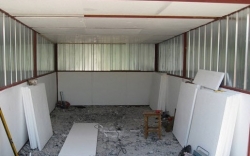
Garage insulation is a kind of key to the long life of your car. Sudden temperature jumps lead to condensation, which disrupts the anti -corrosion protection of the metal and thereby causes significant damage to the car. To achieve optimal indicators, you just need to perform garage insulation and worry about its heating. Today we will talk about the materials and options for insulation of the garage and how to insulate the garage with your own hands.
Content:
- The need to warm the walls of the garage
- Materials for insulation of garage walls
- Insulation of garage walls outside
- Garage wall insulation from the inside
- Warming of the garage gate
- Warming of the roof of the garage
The need to warm the walls of the garage
The walls of the garage, as a rule, are made relatively thin: when using a cinder block - about 200 millimeters, for brick walls - 250 millimeters, and sometimes 120 millimeters. Of course, such a wall will not be able to become a serious protection against cold air. And the heating of the metal garage is generally devoid of any meaning. Like not drown, with severe frost, perhaps the condensate on the wall appears, and then, when using a very powerful heater.
The issue of the need to warm the garage is not subject to discussion. However, here you need not to overdo it. Many car owners believe that in winter inside the car shelter should be maintained at a level close to twenty degrees above zero, because it is precisely such indicators that it is customary to observe in residential buildings. However, what will be comfortable for the driver can affect the condition of the car adversely.
Remember that the high temperature for iron units is not at all useful! The car, falling from frost into warmth, is quickly covered with condensate, and such moisture will gradually lead to the destruction of the body of the machine and the appearance of rust. Therefore, thoughtless insulation of the garage will not only not bring benefits to the car, but only great harm.
It is necessary to insulate the room so that the machine is stored at positive temperature values, and at the same time the temperature difference in the garage and the windows was minimal. The optimal atmosphere for the safety of the machine is a plus of five degrees. This temperature will be comfortable for the car. And if the driver is cold, then you can sometimes use the heater.
When planning wall insulation in the garage, motorists also make another mistake. They close all the holes without exception through which cold air is able to seep. Often, within the framework of such insulation, ventilation holes are also clogged, which strictly cannot be blocked.
In the garage room, machine combustion products will constantly accumulate. Combat gases for humans are dangerous. Therefore, it is important to provide ventilation or hood so that harmful compounds can leave the room. Without ventilation, you also cannot get rid of excessive humidity. And in winter, a lot of ice and snow accumulates on the bottom and wheels of the car, which quickly melt.
Another important indicator is thermal inertia that determines the speed with which the surface temperature changes over time. It is advisable to equip the garage insulation so that the thermal inertia of the enclosing structure increases from the outside, and the thermal conductivity of thermal insulation materials that make up this design, on the contrary, decreased. The insulation with such a scheme will not let cold air in the shelter in winter, and in the summer the heat.
When warming the walls of the garage, the question arises - insulate from the inside or outside. Many will initially answer you that it is necessary to fix the thermal insulation material outside, since from the inside it takes a certain space. However, the choice should not be limited to one space. There are several more arguments speaking in favor of external insulation.
There are always risks of freezing walls in winter during internal thermal insulation. Whatever expensive insulation you bought, it will still distinguish harmful evaporation into the room. Therefore, it is better to fix the insulation from the outside. Well, if you decide to insulate the basement and garage from the inside, then do not buy cheap thermal insulation materials and be sure to provide good forced ventilation.
Materials for insulation of garage walls
On the market for thermal insulation materials there are many options that are suitable for insulation of the garage from traditional and all known and ending with ultra -modern ones. Let's look at the main of them.
Mineral wool
Minvata helps to warm the walls of the garage qualitatively, without violating natural breathing indoors. To conduct external insulation, mineral wool is customary to use hard mats, which have a density of 200-240 kilograms per cubic meter, and for internal thermal insulation, soft and semi-rigid mats with a density is close to 120-180 kilograms per cubic meter.
Basalt mineral wool is considered the best, which demonstrates record indicators of thermal conductivity and sound absorption. However, remember that for insulation with mineral wool from the inside, thermal insulation material should be protected by vapor barrier so that the insulation from the environment does not gain moisture and does not subsequently lose its abilities.
Glass wool
Glaud is cheaper than mineral wool, about 20-25%. However, it is necessary to work with her only in special mittens, because the fibers are very sharp and hard, and you can injure your hands and eyes. In addition, if water got to the material during installation, then you can calmly throw it away, since it will not work to dry it.
After getting wet, the fibers become heavy and coming, losing their heat -insulating qualities forever and highlighting a constantly unpleasant odor. Therefore, glass wool insulation pie will have to be completely isolated with foil or films.
Styrofoam
This polymer insulator is a favorite thermal insulation material, which is used when warming the garage with your own hands, as it is convenient and easy to install, has a low weight, lends itself to an ordinary hacksaw, is not afraid of moisture, does not rot and is available in price. The most popular type of polystyrene is polystyrene foam, because it is steam and waterproof, and its useful period reaches 40 years.
However, in the foam, it has its disadvantages and it is not able to pass air and is considered a combustible material, so it is recommended to choose a self-adjusting PSB-S, which goes out after neutralizing the fire source for 4 seconds. And, regardless of the fact that neither chemistry nor water is terrible for him, he is still afraid of the sun, the foam is yellow and crumbles under its influence.
Reflecting thermal insulation
Reflective thermal insulation is the last development in the environment of energy saving. It is made in the form of rolled material, which is covered on one side with a layer of foam polyurethane, and on the other - polished foil. This type of insulation is recognized as the best solution for the internal insulation of the garage from the perspective of the saving of useful area. The thickness of the insulation is minimal - 2-5 millimeters.
This also allows you to create a facing layer, unlike the use of traditional heat -insulating materials, the minimum thickness of which is 50 millimeters. With the addition of internal, facing and decorative layers, it runs to a common one minus 10-15 centimeters. However, you will be disappointed that the ultra -thin reflective thermal insulation plays the role of a mirror to reflect the infrared radiation of heat. It is ineffective in its convection and induction, which are the main culprits of the greatest heat loss.
Warm plaster
This is an unusual composition that contains special fillers, such as swollen vermiculite, sawdust and balls of polystyrene foam, which give it thermal insulation properties. However, in order to get a really serious warm effect, you need to apply a very thick and heavy layer of plaster on the walls of the garage, so it should be combined with other types of insulation, as shown in the photo insulation of the garage.
Thermal insulation paint
Those car owners who value not only comfort, but also attractive appearance, are suitable for liquid heat insulators made of acrylic polymers with the addition of synthetic rubber and organic pigments in them. In appearance, such a substance resembles ordinary paint, which is inherent in amazing thermal insulation properties: a layer of heat -insulating paint of 1 millimeter replaces 50 millimeters of the minvata.
Thermal insulation paints demonstrate good adhesion with metal, plastic and wood. Therefore, warm colors are considered an ideal solution for insulation of the garage from the beam, because the heat -insulator is able to create a vapor permeable coating and allows the wall to breathe, excluding the waterlogging of the internal part of the structure and protecting the garage from the destructive effect of moisture. The technology for applying such a heat insulator is as simplified as possible.
Insulation of garage walls outside
Let's start garage insulation from the walls. For insulation of brick walls, the quality/price of the foam is great in terms of ratio. The only thing, in places where high temperatures (equipment or heating furnaces) are possible, mineral wool plates should be used instead of fusion plastic.
With external insulation of the walls of the garage with polystyrene, you can avoid contacting the temperature difference in winter, which leads to humidity at the junction of the insulation with the surface. Therefore, to eliminate this effect when warming the walls with polystyrene, it is necessary to equip forced ventilation in the room, ensuring its continuous operation.
First you should prepare the surface for fastening of the foam. The walls should first be cleaned of dirt, old plaster, oil spots and dust, and light cracks and chips are covered with plaster. So that the garage insulation does not bring any problems in the future, the base must be strong and clean. The surface of the walls is also advisable to be primed to increase adhesion with glue.
For insulation of the shelter, it is recommended to use polystyrene, which has the 25th strength and thickness of 5 centimeters. The solution on the sheet can be applied by a blink method, then tightly pressed against the wall. However, point application from the worker requires a certain dexterity. Therefore, the slab method should be applied to eliminate the occurrence of the smallest gaps between the surface and the stove. In this case, the solution on the foam is applied using a gear spatula.
Foam sheets when warming a brick garage should be staggered in a checkerboard pattern, carefully pressing them with each other. The wall is covered with sheets of foam from the bottom up. It is necessary to lay the first row on the initial bar attached to the surface with dowels. After the glue drying out, each masonry element is usually fixed with three plastic dowels.
Foam is characterized by low strength. And the structure of insulation, which are made on the basis of various kinds of fibers, makes them also prone to saturation with water, which significantly reduces the heat -protective properties of thermal insulation material. All this requires the creation of additional protection of thermal armor.
It is advisable to make protection of the insulation using a layer of plaster reinforced for the strength of a fiberglass mesh. For installation of a mesh panel, the surface of the foam must be covered with glue 3-5 millimeters. After that, the grid is crushed in stripes and overlapping in an adhesive substance and covered completely with glue. For the purpose of plastering, decorative facade plaster is used.
After that, the surface is primed for canning the porous surface and covered in several layers with facade paint. For external protection, siding and other facing materials are moisture -resistant CSP and GKL, gypsum fiber sheets, various plastics. If you prefer leaf materials, then remember that their fastening must be performed using the frame.
Garage wall insulation from the inside
The insulation of the walls of the garage from the inside is rarely used, but if you have chosen this particular methodology for thermal insulation of the walls, then it should be carried out in this order. At the first stage, you should prepare the surface by cleaning the wall. With the help of drywall, you need to make a false-art, in its frame you will invest a heat insulator.
To create such a frame, standard UD guides and fastened CD profiles are used. UD racks are attached with dowels to the ceiling and floor in a step of 25-30 centimeters. Then the CD profiles are installed every 60 centimeters using special suspension, which are mounted in a wall with a step of 30 centimeters, to which the last facing layer will need to be attached.
You can also use not only drywall for lining the walls of the garage, but also asbestos. The latter option is preferable, since such sheets have increased fire resistance, compared to drywall. However, asbestos is more fragile, so you need to take a step at the frame more often. In the intervals between the wall and the skin, lay the selected insulation.
Usually, cotton heaters are used for internal insulation of the walls of the garage, since there will be more hassle with polystyrene. In the middle of the partitions, you need to insert mineral or glass wool, attaching it to the surface with special dawns. Then, on top of profiles, it is necessary to lay vapor barrier. To do this, it is better to take a membrane that should be laid on a cotton insulation.
On the outside, it is recommended to plastered a garage box with warm plaster or covered with paint-insulator. So you can move the dew point to the outside of the walls, which will protect them from future moisturizing and freezing. It is also necessary to equip forced ventilation, designed for an intensive level of air exchange.
An effective method of insulation of the iron garage from the inside is the application of liquid thermal insulation - foamed polyurethane or liquid inlets. For example, you can buy isolate, paint-termmos and others. Liquid foam is a foamy mass, which is made directly at the construction site through the use of special equipment - foam generators. Such foam when applied to the wall of the garage turns into a solid crust, which has excellent adhesion.
The simplest and most inexpensive way of insulation of the walls of the iron garage is the fastening of foam plates to the glue. The main thing at the same time is good to clean and degrease the metal surface so that the sheets of thermal insulation material are glued and kept reliably. The cracks that remained between the sheets are thoroughly blowing with mounting foam. The surface of the insulation can be painted after that. However, remember that these materials are very combustible and many toxic substances are distinguished into the air when fire.
Warming of the garage gate
When warming the walls of the garage, pay attention to the gate, because they are large, and through them shelter loses a lot of warmth. If the gate is not insulated, it will be difficult to heat the garage. To begin with, it is worth doing a small door in one sash so that every time you do not open a huge gate. Next to the gate, you can hang a veil of plastic or dense fabric, which is capable of holding part of the heat in the room.
It is better to take transparent plastic for this so that the driver can see where he is going from the garage. It is recommended to use a thick (at least 0.8 millimeters) polyethylene film. Cut the material in stripes of this length that when fixing over the gate opening from the inside, do not reach a centimeter to the floor. The width of the strips should be close to 20-30 centimeters.
Excessively narrow stripes are able to cling to the protruding parts of the car, for example, for external mirrors, wide will be uncomfortable. Attach the stripes with a stapler on a wooden rail so that one strip is overlapped with another 1.5-2 centimeters, or a little more. The stripes should hang under their own heaviness evenly, and with deviations - quickly return to their place.
Paths of the garage gate is best isolated with polystyrene. Warming, as already mentioned, is desirable to carry out outside, but for the gate it will be problematic to do. On the inside, it is necessary to attach the crate, then fill all the gaps in it with foam. To exclude the flow of low -temperature masses of air through the gaps that form in the adjustment of the gate, should be treated with adhesive tape.
To eliminate drafts, you can use rubber seals. Since insulation from the inside of the garage gate causes the formation of condensate at the places of touching metal and insulation, the canvases must be covered with anti -corrosion protection. Having made a waterproofing gate, you need to attach a frame to them, which will act as the basis for the skin.
At the same time, primed the details of the frame to protect against warping and fungus, for which the heated olifa is suitable, and clean the layer of foam, closing it with durable material. It is recommended to perform a thin board or OSP. Using moisture resistant materials, for example, GKL, is not recommended.
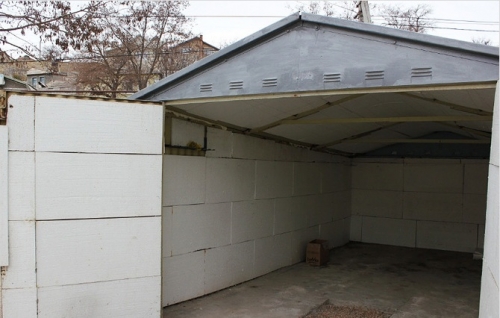
Warming of the roof of the garage
If the garage is erected separately from the house, you will have to insulate all its designs, and not just the walls, including the roof. After all, heated air is easier than cold and rises up, penetrating through building structures and melting snow on the roof. The methodology for fastening the sheets of foam depends on the structure of the floor. If the roof is made of boards, then it is worth grabbing the material with dowels of an umbrella or ordinary nails, and then close it with sheet materials, attaching them with long screws to a plank base.
If the garage is blocked by a concrete stove, for insulation from the inside of a concrete garage, or rather its roof, you will need a frame that is attached to the slabs using metal corners and screws, which are screwed into plastic dowels. The foam must be laid according to the frame, fixing it with tape, and then pressing it with a sheathing, which is attached to the frame.
Moisture does not pass the foam, so it makes no sense to perform its steam and waterproofing. But when using fiber insulation, additional measures are required related to moisture protection. From the side of the roof, waterproofing must be laid, and vapor barrier from the garage, which prevents the penetration of a pair of moisture located in the form of a pair of moisture.
If desired, you can perform additional antiseptic and decorative processing: paint the plaster with lime, chalk or water -based compounds, CSP and GKL with oil or acrylic paints, having previously filled the seams with putty.
The ceiling insulation in the car shelter can be done according to another scheme. Create for this and insulate the floor so that the attic appears in the garage. The floor of the attic is mounted on wooden beams. A crate for insulation plates is created on the boards, then thermal insulation material is laid. In conclusion, boards are located on top of the structure so that you can move around the attic.
It is necessary to warm the floor in the garage. Often arrange a basement for storing conservation and vegetables under the garage. If there is no cellar, then it is necessary to isolate the room from frozen and wet soil. To do this, you should deepen the floor by 30 centimeters, align it, then fill it with crushed stone by 10 centimeters, equip a sand pillow of 5 centimeters on top, ram, pour hot bitumen and make a concrete screed, which is strengthened by an iron mesh.

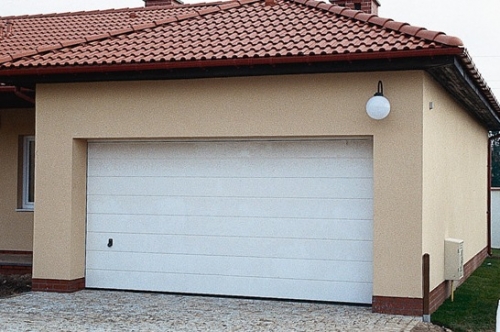
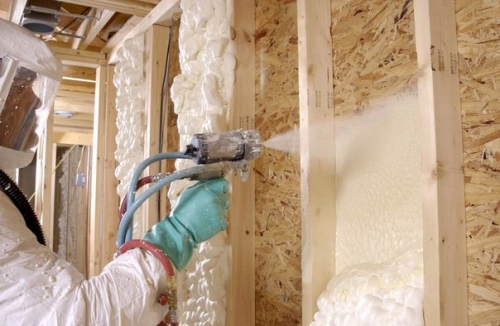
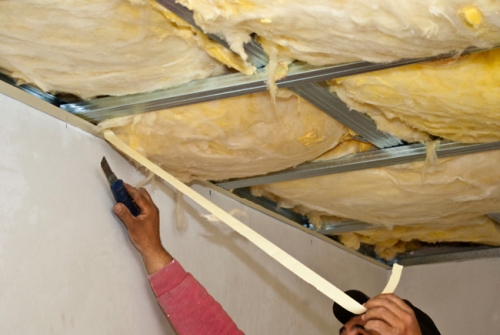

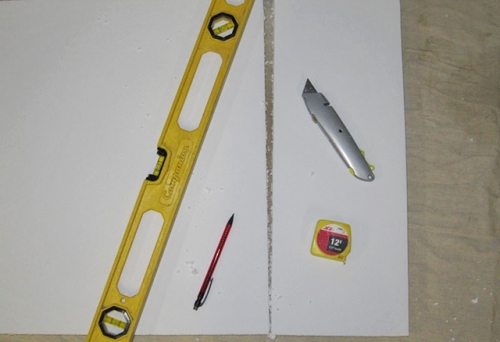
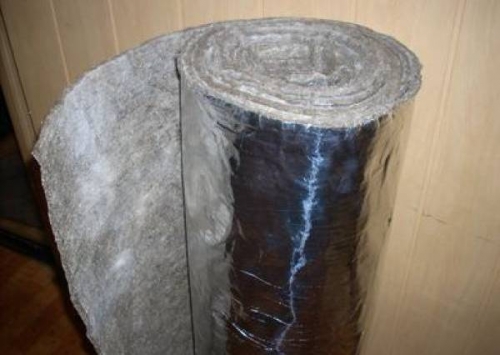
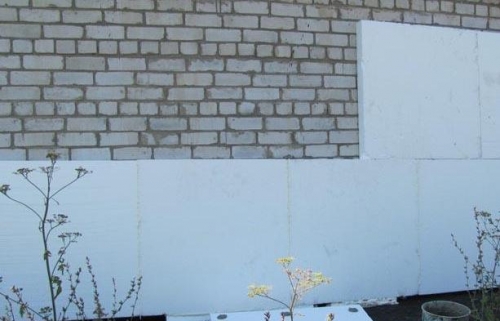
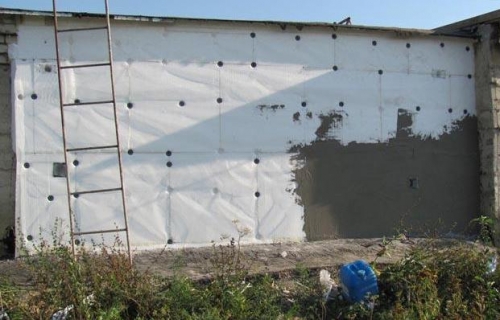
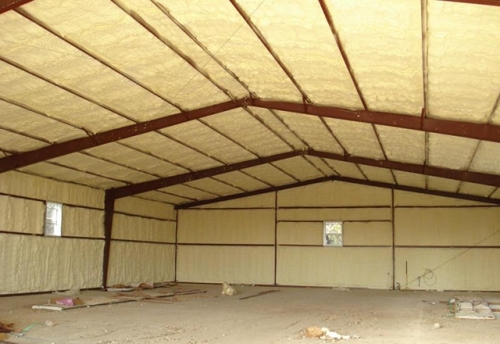
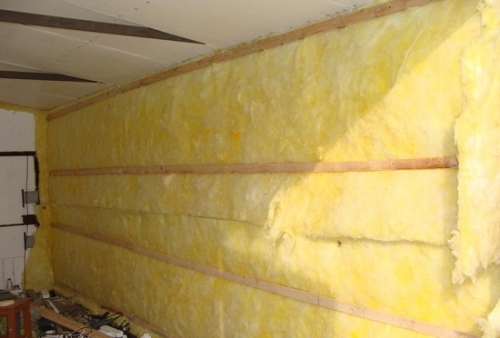

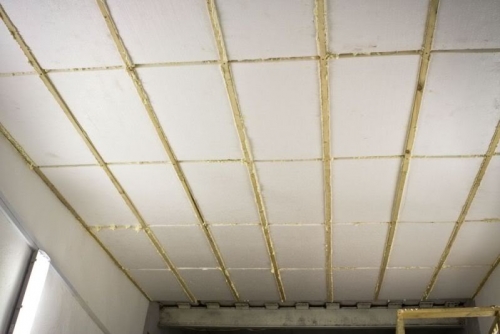
And where to get the grandmas to these
And where do you not say the grandmothers where to get these works?